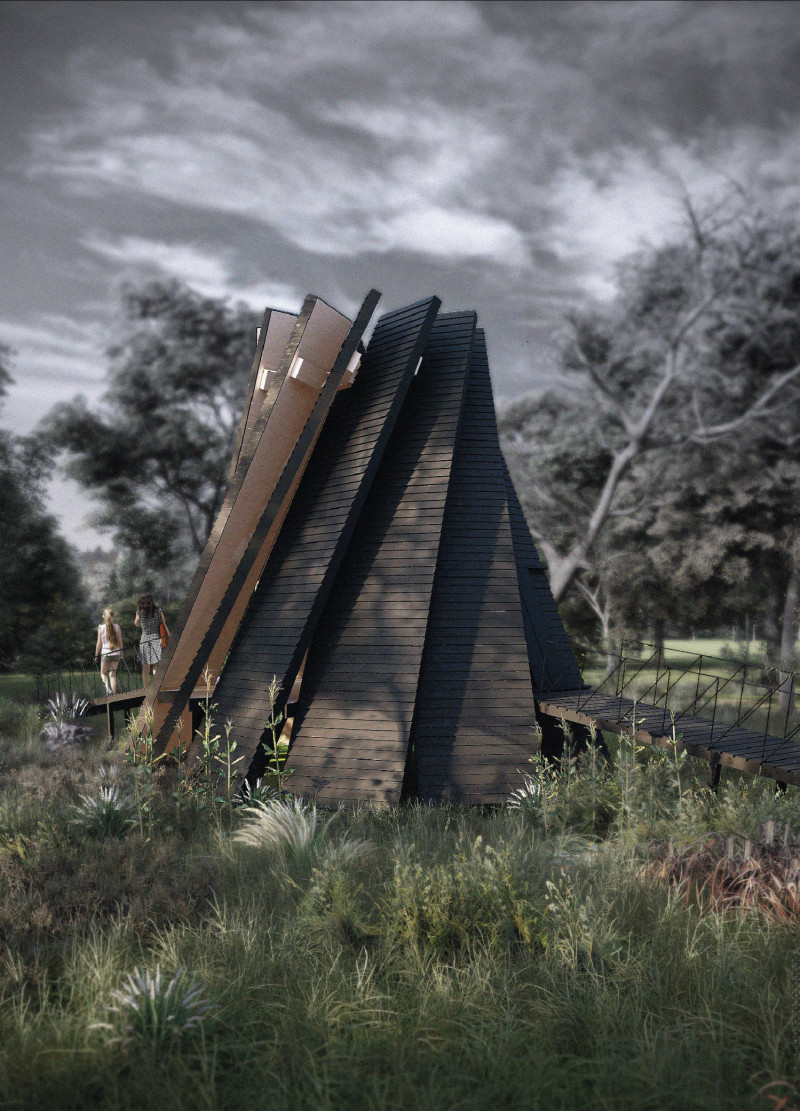5 key facts about this project
“Tiny Boundless” is an architectural intervention that creates a connection between its occupants and the surrounding landscape. Located along a designated path, the cabin serves as a focal point, guiding visitors to pay attention to both the journey and their interaction with nature. The design concept aims to create a space for reflection and awareness while also maintaining a close relationship with the environment.
Pathway Design
The path leading to the cabin rises over a small bridge, inviting exploration as it transitions from the outside world to the interior space. This approach encourages visitors to engage with the landscape from the very beginning, enhancing their experience as they move toward the cabin. The elevation adds visual interest and emphasizes the act of moving closer to the retreat.
Spatial Configuration
Inside, the cabin is defined by a circular arrangement of overlapping plates. This unique layout allows for glimpses of the natural surroundings, with sunlight filtering through the openings to light up the interior. The design strikes a balance between feeling enclosed and open, creating a relationship between isolation and connection to nature. This interplay enriches the overall visitor experience.
Altar and Mechanism
At the top of the cabin is an altar designed for processing flower essences, which utilizes a sailing ship mechanism featuring winches and ropes for adjusting its position. This thoughtful feature integrates practical elements into the design while encouraging interaction. The altar serves as a central point of interest and highlights the project’s intention to engage visitors in a hands-on manner.
Material and Light Interaction
Although specific materials are not mentioned in the presentation, the design focuses on how light interacts with space. The overlapping plates create a dynamic play of shadows and highlights, changing throughout the day. This balance of design, light, and nature captures the essence of the cabin’s goal to strengthen the relationship between occupants and their surroundings.
The cabin concludes with a space that fosters a rich experience, merging functionality with a deep connection to the natural world.





















































